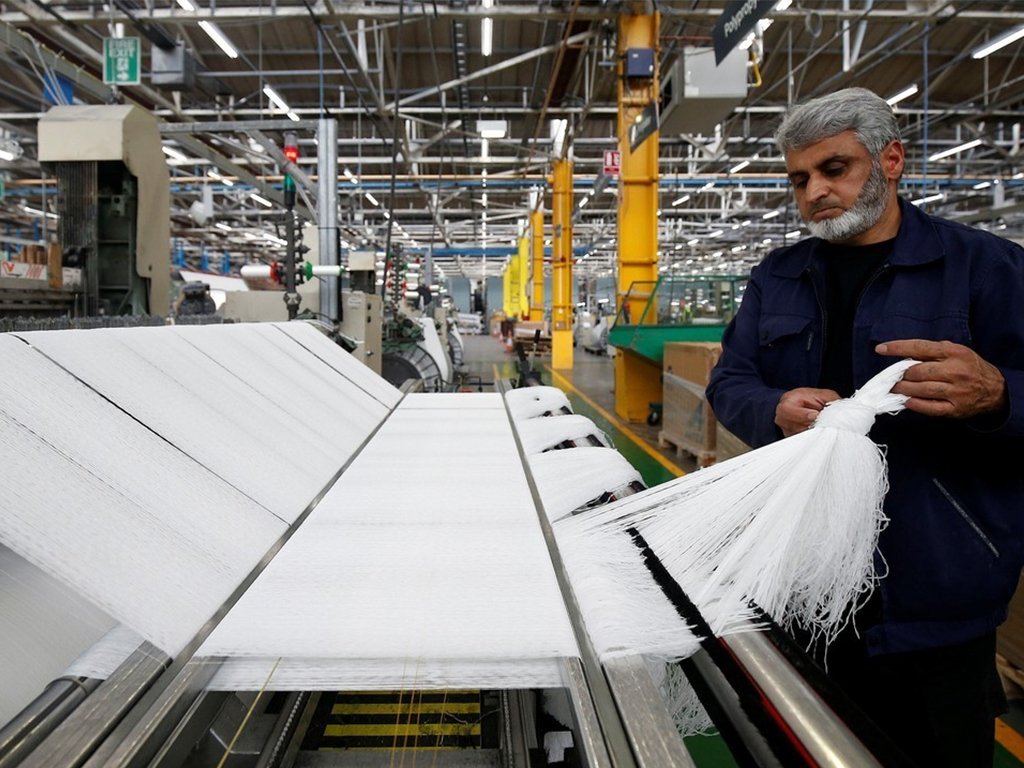Bhanero Textile Mills Limited (PSX: BHAT) is part of the Umer Group of Companies. It was established in 1982. The group has diversified into various sectors ranging from textile i.e spinning and weaving, to power generation, to footwear manufacturing/retail, leather manufacturing, leather garments, dairy and construction activities.
The core business for the group has always been textile. Within this sector they have three companies, Bhanero Textile Mills Limited, Faisal Spinning Mills Limited and Blessed Textile Mills Limited. Bhanero Textile Mills has one unit at Kotri, Sindh and two units at Sheikhupura, Punjab.
Shareholding pattern
The directors, CEO, their spouses and minor children hold the majority of the shares at 52 percent. Of this, Mrs. Samia Bilal holds 11 percent of the shares, while the CEO of the company, Mr. Khurram Saleem holds 2 percent. Another key shareholder category is associated companies, undertaking and related parties, which collectively own close to 43 percent of the shares. Of this, about 17 percent is with Admiral (Pvt) Limited.

Historical operational performance The company’s turnover has been fluctuating at varying rates since FY12, whereas profit margins picked up in FY16, after bottoming out and reaching the lowest seen in FY15.

During FY15, revenue dropped by nearly 9 percent, owing to a decline in cotton prices, from Rs 5,300 per maund to Rs 4,700 per maund. This also kept profit margins under pressure as the spinning segment was largely affected, as prices declined, not only in the local market but internationally as well. Cost of production also remained high, consuming more than 90 percent of the revenue, which made exports uncompetitive in the international market. There was a significant decline in export sales. According to the company, the exchange rate for Rupee was kept high, while other regional competitors devalued their currencies which boosted their exports. With no other major changes in other factors, profit margins reduced.

Revenue further fell during FY16 by almost 10 percent. This was attributed to lower demand as well as prices. China, one of the major export markets for the country had shifted its sourcing from Pakistan to other countries, causing a major dent in textile exports of Pakistan. However, the company managed to control costs in order to maintain profitability. A notable reduction was seen in cost of raw material consumption. The second most significant cost component for the company after raw material is the fuel expense which also saw a decline and hence, the company managed to increase its profit margins slightly.

Some recovery was seen in FY17, as the topline grew at a marginal 3 percent growth rate. Most of this was brought in by export sales of fabric. Cost of production, as a percentage of revenue, only decreased marginally, bringing about little change in profit margins. The textile sector of the country was restricted by high cost of production, owing to high energy costs, and a currency appreciation; both these factors made products unfavourable in the international market. On the other hand, availability of Indian fabric at a cheaper price further made Pakistani products uncompetitive in the international market.

While most of the sectors were hurt by the currency devaluation, companies in the textile sector gained during FY18. Bhanero Textile Mills saw a similar situation as its revenue increased by 18 percent, the highest ever seen. Although a large part of the sales is directed towards the local market, the company did gain from currency devaluation, as export sales of both yarn and fabric picked up. However, this was accompanied by an increase in cost of production which kept gross margins flat. Operating and net margins were only lifted by the unprecedented incline in other income which came about by ‘gain on disposal of property, plant and equipment’.

In FY19, the company saw further growth in its revenue as it increased by nearly 16 percent. Most of this growth, however, was brought about by local sales of yarn. With increasing competition in the international market, and the country losing competitiveness to regional peers, the players found better margins in the local market, as is evident from the increased local sales of yarn. Apart from the increased revenue, profit margins also improved due to a notable decline in cost of production; it consumed 86 percent of the revenue, compared to previous year’s 89 percent. Other income also helped to raise the profit margins; the former was largely driven by interest income which nearly doubled year on year. Thus net margin stood at the highest seen- at almost 9 percent.
Quarterly results and future outlook
Between the nine months ended FY19 and FY20, revenue increased by more than 6 percent. However, costs made up 89 percent of the revenue. Due to currency devaluation, which favored exports, the cost of imported raw material increased. The high other income, coming from interest income and sale of assets, seen in the last two years was absent which also brought down the profit margins to previous levels.

The ongoing pandemic has undeniably had adverse effects on business and economy, however, the company hopes that this might alter the global supply chains to avoid concentration of industries in one country.























Comments
Comments are closed.